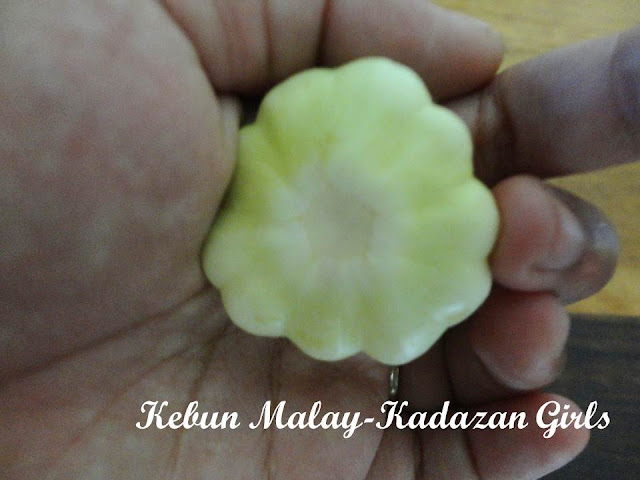We are doing a trial growing sunroot (Jerusalem artichokes) this year in this hot and humid tropical weather and one plant had died off which was planted last November. So we dig in and see what the results are from the spot we tried to grow the sunroot plant. The plant was only about 2 feet tall so I was not expecting much of it. Surprisingly the plant did yield several tubers, although not as many as we used to harvest from one plant. The location was in full sun. At the moment, I am contemplating to regrow the tubers again in different location. As I don't have much tubers to experiment on, probably most will go to re-planting them again rather than cooking the tubers.
Our main harvest last week were sweet leaves (star gooseberry), chillies and butterfly pea flowers. I am not sure what this fruit is called but it is not a mango fruit. My mother gave most of the sweet leaves plants a hard-pruning 3 weeks ago and now new shoots are quickly growing. She pruned those sweet leaves plants to half of its original height.
We also harvested some pattypan squashes, cape gooseberries, sweet basil leaves, cucumber tree fruits, sponge luffa, calamansi limes, soursop, nam nam fruits, purple plum radish, snake beans and pea eggplants. We made juice with the soursop fruit. I have been harvesting while doing some other gardening task and kept the harvest in the pocket. So this picture above summarise what we got to harvest from our garden last week.
We only got a few mulberry fruits to harvest this week. Rayyan has to wait for the fruits ripening on the trees at the moment. Lemon fruits are not as many as previous to harvest since some got a hard-pruning so waiting for new shoots to grow. But we do have a few lemon trees fruiting which is still green not ready for harvesting. I think it is better to have them not ripening at once so we have a succession of harvest. We managed to prune a pamelo, calamansi lime, wax apple and nam nam tree last week. Last Saturday, my husband managed to give a hard pruning on this mango plant that we did not realised had 2 passion fruit plants climbing on it. No wonder we had ripen passion fruits under the bushy mango trees. Not only that we discovered so many orchids on the tree as well which has not seen light for some time I reckon. The passion fruit will flower much better now as they will received more lights and we can also spy whether the plants are fruiting or not.
This is another mango tree that had a hair cut as well and we can now see the sky in any angle or corner of this tree. This is the mango that my mother pruned almost 2 years ago and she fell from it. Hopefully tomorrow when she returned she will be happy to see the mango plant had a hair cut.
My husband in the mood to do some tree hard-pruning and has been asking me which tree next. I think it is time to give the sapodilla fruit trees a hard pruning. The sapodilla fruit trees bear fruits almost all year round. But the problem the plant is too bushy now and I can't see the fruits clearly except the ones facing outside. So I think better to give the sapodilla tree a hard pruning.
















